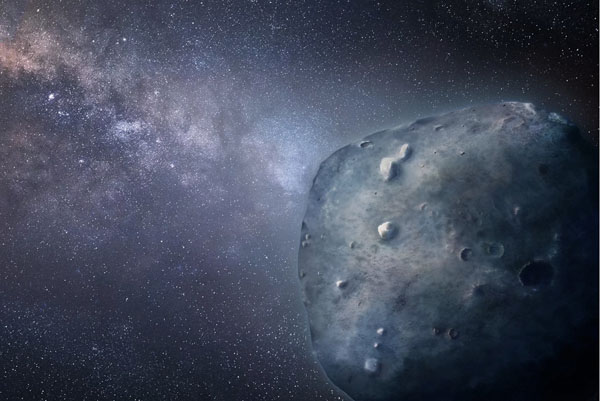A bizarre, blue asteroid that acts like a comet and appears to be responsible for the annual Geminid meteor showermade a close flyby of Earth last year, giving astronomers an opportunity to study the object in unprecedented detail. They found that the asteroid is even weirder than they had imagined.
Asteroid 3200 Phaethon is a special space rock with a rare blue color and an extremely eccentric orbit that has the object pass superclose to the sun and then out past the orbit of Mars. One orbit takes about 1.4 Earth years. This kind of orbit is more typical for comets than asteroids.
But while Phaethon acts like a comet, it doesn’t look like one. When comets get close to the sun, they form a cloud known as a “coma” and a long tail of dust and gas. Phaethon, however, always looks like a tiny speck floating through space.
A bizarre, blue asteroid that acts like a comet and appears to be responsible for the annual Geminid meteor showermade a close flyby of Earth last year, giving astronomers an opportunity to study the object in unprecedented detail. They found that the asteroid is even weirder than they had imagined.
Asteroid 3200 Phaethon is a special space rock with a rare blue color and an extremely eccentric orbit that has the object pass superclose to the sun and then out past the orbit of Mars. One orbit takes about 1.4 Earth years. This kind of orbit is more typical for comets than asteroids.
But while Phaethon acts like a comet, it doesn’t look like one. When comets get close to the sun, they form a cloud known as a “coma” and a long tail of dust and gas. Phaethon, however, always looks like a tiny speck floating through space. [The 7 Strangest Asteroids in the Solar System]
On Dec. 16, 2017, the asteroid Phaethon made its closest approach to Earth since 1974, passing within 6.4 million miles (10.3 million kilometers) of our planet. While backyard astronomers pointed their telescopes toward the space rock to catch a glimpse of the historic flyby, astronomers in observatories around the world took the opportunity to learn more about what the object is and where it came from.
Teddy Kareta, a graduate student at the University of Arizona who led an international effort to investigate Phaethon during the flyby, presented his team’s findings here at the 50th annual meeting of the American Astronomical Society’s Division for Planetary Sciences. Kareta and his colleagues observed Phaethon’s close approach using NASA’s Infrared Telescope Facility on Mauna Kea in Hawaii and the Tillinghast telescope on Mount Hopkins in Arizona.
By Hanneke Weitering – Full Story at Live Science



